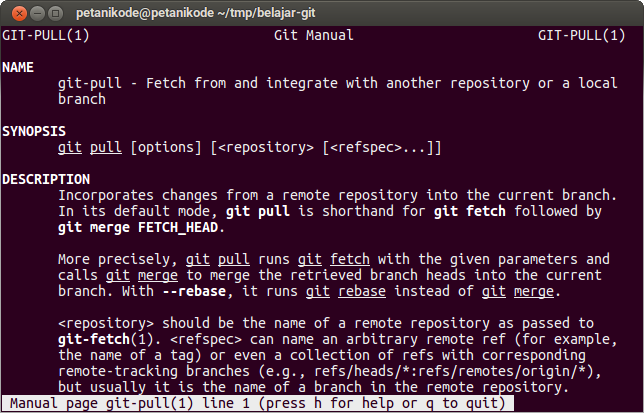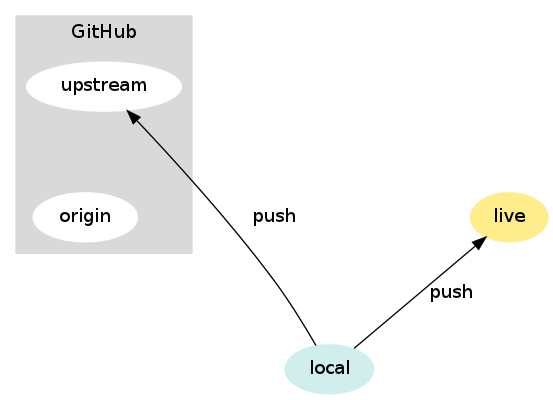

- #Git pull remote branch meaning code
- #Git pull remote branch meaning download
- #Git pull remote branch meaning free
- #Git pull remote branch meaning mac

TIP: If you’re sure you’re on the branch you want to push, you can use symbolic references like HEAD to grab the of the current branch without having to type it out. Pushes all local branches to remote repositoryįor a comprehensive list of flags, visit the git push documentation.With this command, pushes from your local repository would be forced onto the remote repository, potentially deleting or overwriting other commits!
#Git pull remote branch meaning code
Pushes that would delete or overwrite existing code are usually blocked.
The general syntax for command is: git fetch#Git pull remote branch meaning mac
The relationship between the current branch and upstream branch is remembered, such that you will not have to continually connect the remote and local branches when pushing commits. Windows Mac What is git fetch The git fetch command retrieves commits, files, branches, and tags from a remote repository. This creates a remote branch and sets it upstream of the current branch you are pushing.You are adding additional flags, such as in git push origin -delete, and want to be explicit.You want to push a local branch to a remote branch of a different name.More than one remote repository exists such that the remote repository to be pushed to must be specified.However, there are some cases where you might want to explicitly use git push origin: If the original git configurations are being used, git push assumes the current branch is the one to push, and assumes that remote is origin. Git push and git push origin will both push the current branch to the remote counterpart. NOTE: The behavior described is for git versions 1.7.11 or higher. When should I use git push origin vs git push? This is common when you are the only contributor to your project, and you want to directly edit the default branch of your project with changes. Where git push initiates the push, origin refers to the remote counterpart of the project, and main is the branch name.

Pushing to the default branch can be done using: It’s important to check the name of the default branch. If a project you are working on is older, the default branch might be named “master”, which GitHub changed to remove references to slavery in conventional terminology. This branch is the version of the project that goes into production or the version from which you will create further branches to isolate changes, and merge back into the default branch. The default branch in your project is conventionally a branch named “main”. Git push origin will push the current branch to the branch of the matching name in the remote repository (aka, “branch configured upstream”), if it exists, otherwise, it will not push and notify that the current branch has no remote counterpart (error message: “ has no upstream branch”). Git push origin will push the current branch to the remote counterpart of that branch. You can choose which branch(es) to push to origin: Choosing which branches to git push origin Origin is the conventional shorthand name of the url for the remote repository (usually in GitHub or another cloud git repository provider) for your project.
#Git pull remote branch meaning free
You can learn more about tracking connections in our free online book.$ git push This means that, if a tracking connection has been set up, you can simply omit naming the remote repository and branch: $ git pull This configuration provides default values so that the pull command already knows where to pull from without any additional options. In most cases, your local HEAD branch will already have a proper tracking connection set up with a remote branch. $ git fetch origin Using the Plain git pull Command
#Git pull remote branch meaning download
If you don't want to integrate new changes directly, then you can instead use git fetch: this will only download new changes, but leave your HEAD branch and working copy files untouched. By default, this integration will happen through a "merge", but you can also choose a "rebase": $ git pull origin master -rebase It will also directly integrate them into your local HEAD branch. Using git pull (and git pull origin master is no exception) will not only download new changes from the remote repository.


 0 kommentar(er)
0 kommentar(er)
